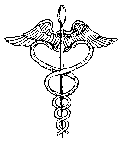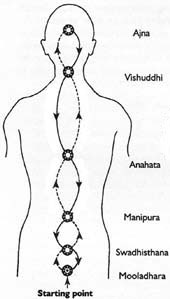| |
Daniel Carr
Berkeley Thai Massage
All injuries healed here.
Convenient Downtown Location
|
Thai Massage
An Overview
Thai Massage:
- Utilizes a combination of pressure point manipulation and stretching techniques to facilitate a comprehensive treatment for all types of chronic pain and sports injuries.
- Can also be used as a stress-reduction treatment in aiding complete relaxation of the body.
- Can provide improved athletic performance through specific flexibility enhancement techniques.
- Is a healing modality that is used extensively throughout modern day Thailand and whose origins can be traced to the Buddha's personal physician.
Man is born gentle and supple.
At death, his body is brittle and hard.
Living plants are tender
Filled with life-giving elixir,
But at their death
They are withered and dry.
The stiff, the hard, and brittle
Are harbingers of death.
Gentleness and yielding
Are the signs of that which lives.
The warrior who is inflexible
Condemns himself to death.
The tree is easily broken
Which ever refuses to yield.
Thus the hard and brittle
Will surely fall,
And the soft and supple
Will overcome.
Verse 76, "Tao Te Ching"
The popularity of Thai Massage is exploding worldwide for no other reason than it's effectiveness in treating and healing conditions that are problematic for Western Medicine to handle. In particular, it is quite effective in treating structural injuries, either sports or work related, that result in chronic pain and reductions in range of motion.
Thai Massage is proving to be the most effective bodywork treatment for all types of athletic injuries. Most clients report significant decreases in pain and significant increases in range of motion and athletic performance.
Clients with sports injuries receiving Thai Massage with stretching often find they are even more flexible after the treatments than before they were injured.
The Thai word for massage, nuad, means much more than what is traditionally expected from massage known in the West and would be more accurately described as a combination of the following techniques:
- Pressure Point Stimulation
- Assisted Stretching Positions
- Specific Treatments for identifiable conditions, i.e. sciatica, knee pain, migraine, etc.
Thai Massage works on the muscles, ligaments, nerves, joints, as well as the internal organs. It affects the whole body as one organic unit.
Thai Massage also includes nervous system peripheral stimulation therapy as found in Chinese acupuncture, Shiatsu, and hand and foot reflexology, all of which deal with balancing the flow of energy (prana, ki, chi) within the body. This sort of emphasis in bodywork serves the purpose of releasing the nervous system so that the body can relax into a position of healing.
When parts of your body are locked into permanent spasm, it is impossible to heal completely. Most injured people don't realize it, but their nervous systems have locked many of their injuries into permanent spasms that never release. Most people's bodies are asymmetrical as a result of these unreleased contractions.
Thai Massage can unlock these permanent spasms, freeing up the body to move back to a place of balance.
|
Comparison of Indian, Chinese and
Thai Concepts of Energy Lines
Most Yoga systems consider that there are 72,000 nadi's or energy lines in the body. These are not ordinary nerves or veins, but are subtle electric channels which manifest in the physical body.
As long as these channels perform their normal function of maintaining a smooth electric flow, the body stays free from disease and pain. The flow in these channels can be impaired by structural injuries.
Three nadi's are considered highly significant role in the Yoga tradition: the Ida, Pingala, and Sushumna nadis. These nadi's are also represented in the symbol of Caduceus, which is used as a signature icon in the medical profession. It shows two serpents, representing the energy channels on the left and right of the spine, spiraling around a staff, a symbol for the spinal channel.
 In Traditional Chinese Medicine, there are twelve primary and eight 'extraordinary' meridians or energy lines which would most correspond in theory to the nadis of Yoga. In the Thai Yoga Massage system, there are ten primary nadis known as Sen, which like the Indian system, originate at the navel. In Traditional Chinese Medicine, there are twelve primary and eight 'extraordinary' meridians or energy lines which would most correspond in theory to the nadis of Yoga. In the Thai Yoga Massage system, there are ten primary nadis known as Sen, which like the Indian system, originate at the navel.
Instead of viewing these different systems as contradictory because of a lack of exact correspondence between the energy lines, they should be viewed as complimentary. With over 72,000 nadis running through the energetic body, there is plenty of room for varying systems to operate in tandem.
There is an approximate correspondence between these three traditions that is worth noting:
- The Sen line called Sen Sumana in Thai Yoga Massage, which starts at the tip of the tongue and ends in the solar plexus closely corresponds to the Sushumna nadi in Yoga, and forms part of the conception vessel (Ren Mai) of the Chinese system.
- The Sen Ittha, which runs from the left nostril over the head and down the left side of the spinal column to the back of the thigh closely corresponds to the Ida nadi of yoga and the bladder meridian of Chinese acupuncture.
- The Sen Pingkhala, which runs from the right nostril over the head and down the right side of the spinal column to the back of the thigh closely corresponds to the the Pingala nadi and the bladder meridian of Chinese acupuncture.
|
Techniques of Traditional
Thai Massage
Balancing the energy flowing thorough the Sen channels and resetting the structural component of the body are both accomplished by a combination of pressure points and stretching techniques. Pressure is applied to specific points (often identical to the acupuncture points of Chinese medicine) and along Sen lines using the thumbs, hands, feet, knees, and elbows.
Many of these points are automatically stimulated in many Yoga, Tai Chi, and Kung Fu asanas or postures. A Thai Massage Therapist will utilize Yoga-like positions/asanas to stretch a client after loosening the body up with pressure point manipulation.
The stretching aspect of Thai Massage is particularly effective, because the positions do so closely resemble the asanas of Hatha Yoga and have the same benefits.
The receiver is moved into a position by the Thai Massage Therapist, in which this passive experiencing of the stretch allows the receiver to relax deeper into the position. When the receiver can completely relax into a stretch, the muscles are free to move into new positions and ranges of motion that would otherwise not be achievable.
The positions of a well structured Thai Massage follow an order which forms a natural and logical sequence based on the needs of a particular client. There are techniques of the massage that are universally applied to all clients, typically standard pressure point stimulation, and other aspects, specific stretches and treatments, that are applied based on the existing conditions a client may have.
One size does not fit all, but having a multitude of stretches and treatments at the discretion of a Thai Massage Therapist provides the client with the possibility of focusing on his or her particular needs.
A skilled therapist knows how to orchestrate a treatment so that each position prepares the body for the next, leading the receiver to increasing degrees of relaxation, release, and stretching. This type of sequencing follows the principles of any well-structured Yoga program.
|
What A Client Can Expect
In a two hour treatment, the massage begins with the receiver lying supine/face-up. The Sen lines of the feet and legs are worked on using both palm and thumb pressure. This serves to stimulate and prepare the receiver for the following positions, both side prone and prone, in which pressure points that open up the hips and back are stimulated.
From there, the arms, shoulders, neck, and head are worked on, completing a sequential movement up the body. Once the body is open, stretching follows a similar pattern of moving up the legs to the hips and back, finishing with the upper body.
Specific treatments are best dealt with at the end of the session, as the body is completely open to receive the treatment.
|
Benefits
The overall effect of a Thai Massage is an opening of tight joints and a lengthening of muscles, combined with a sense of very deep relaxation and well-being.
Muscles that have been frozen in the wrong position are free to move back to their correct positions, reducing or eliminating painful motion, pinched nerves, and joint pain.
The nervous system is tonified by stimulating specific nerve endings and energy points in a choreographed sequence that relaxes the whole body and regulates energy flow.
You can expect reductions in chronic pain and increases in range of motion in the first session or there will be no charge.
This is my promise of quality to you.
|
|
|
|
|
|